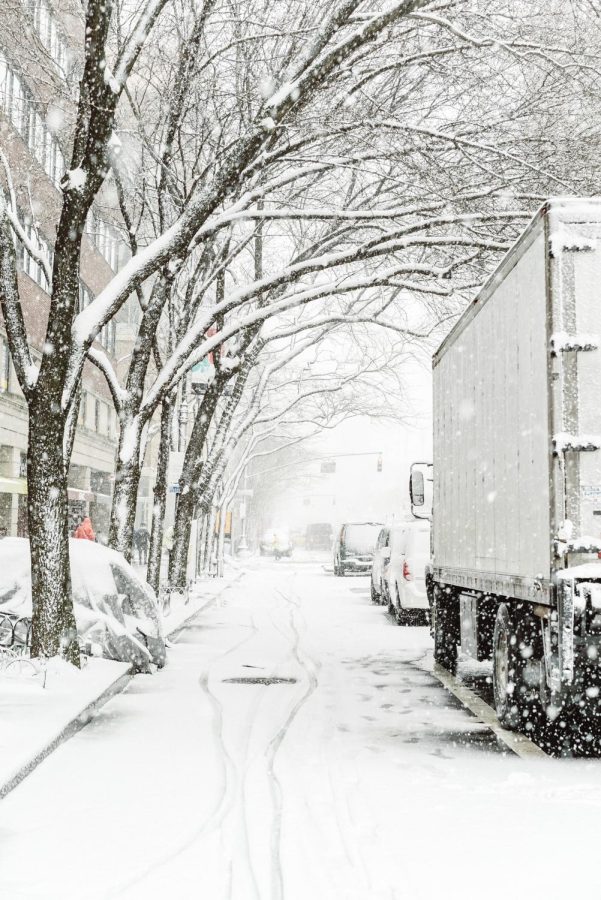Road Salt Can Keep Citizens Safe but is Damaging the Planet
Road salt may help keep these drivers safe, but is damaging the environment.
March 11, 2022
Road salt is a cheap and effective way to make the roads safer to drive on when the roads are layered with ice. According to Columbia Climate School, “Today an estimated 20 million tons of salt is scattered on U.S. roads annually—about 123 pounds for every American.” Studies have shown that while road salt is effective in keeping citizens safe on the roads, it has significant detrimental effects on the environment. Road salt can negatively affect plants, wildlife, freshwater sources and soil.
A large amount of road salt runs off of roadways and collects on the side of roads, damaging the plants near them. The components of the salt degrade the soil, and in turn damages the growth of the plants. Much of the road salt also affects wildlife, potentially harming animals if they digest the salt crystals. An example of this is deer can also get salt toxicosis from eating too much road salt that causes damage to their brains, resulting in more accidents. Some animals like deer are attracted to the salt and like to lick it up, leading to an increase of accidents and more roadkill.
The salt contaminates freshwater sources and ecosystems as well. As stated by Cleveland OH Local News, elevated chloride levels in Ohio are continuing to affect freshwater ecosystems, reducing diversity in streams and slowing the growth of organisms. The high concentration of salt in the water sources can be fatal for freshwater aquatic life and is also a persistent risk to marine organisms because it doesn’t evaporate– it only builds up over time. Studies further explain that too much salt in freshwater sources can cause salty pockets to form at the bottom of the water, which creates biological dead zones. There is so little oxygen in these dead zones that aquatic life can’t survive at those depths. These zones are often caused by nutrient pollution, especially salt runoff from roadways.
The salt runoff also affects drinking water. According to Cleveland OH Local News, “More than 40 percent of urban streams tested by the U.S. Geological Survey in 19 northern states, including Ohio, showed elevated chloride levels likely related to salt runoff from road de-icing.” The salt contaminates the water until it reaches a certain point where the water is no longer considered drinkable, according to federal safety standards. This is a concerning issue because as of right now, there isn’t a reversible solution to remove the salt from the environment. According to Columbia Climate School, “‘Once salt gets into the soil, or into a waterway, there really are no biological processes that will remove it,’ says aquatic ecologist Andrew Juhl.” The salt collection continues to contaminate and build over time and as far as studies show, there aren’t many solutions.
Research has revealed there aren’t many easily adaptable alternatives to road salt when it comes to deicing the roads. There have been found to be two chloride alternatives available, but they are much more expensive compared to the current road salt. Different food byproducts have been tested, but they weren’t as effective without adding salt to the liquids. The alternatives have their own disadvantages, being that the organic materials can deplete the oxygen levels of water sources which can also endanger aquatic life. Scientists are continuing to study the effects of rock salt on the environment in order to discover cheaper, safer, and more sustainable alternatives.









